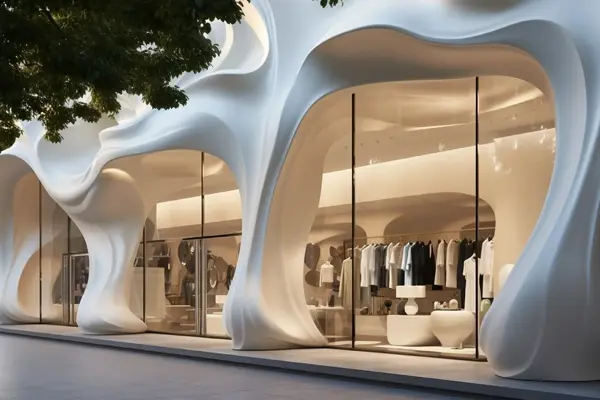What is phygital?
While the pandemic has, by and large, accelerated the shift to online shopping, many customers still seek human interaction offered in brick and mortar. As the economy recovers and physical stores reopen, retailers are wondering about the future of retail and how they can adapt to the customer behavior change in the post-pandemic era. The concept of phygital may answer. The term phygital is the portmanteau of “physical” and “digital.” It signifies the convergence of online shopping and brick-and-mortar experiences. The ultimate goal of phygital retail is to enhance the customer experience as a whole.
Benefits of phygital
In a phygital world, the online and offline channels are no longer substitutes but good complementaries. Physical experiences can be enhanced with the convenience and excess of information the internet holds, whereas digital experiences can be enhanced with human connections or physical enhancements. Through blending the physical and digital worlds, retailers can streamline and personalize their customer journey and ultimately create immersive, immediate, and interactive customer experiences.
Examples of phygital
Below are three examples of how businesses can phygitalize their customer experience.
Smart fitting room
The concept of smart fitting rooms has now become commonplace in the fashion industry. Using Radio-frequency identification (RFID) and touch screen technology, the smart fitting rooms can identify the articles that customers bring in. The mirrors can then offer the customer relevant information, such as colors and sizes in stock. Apart from checking real-time availability, a powerful smarting fitting room can also show a full range of articles, make recommendations, facilitate direct ordering or reservation. If customers need help from the sales associate, they just hit the call-for-assistance button. While smart fitting rooms offer customers a personalized and convenient experience, data generated in smart fitting rooms can help retailers understand their customers’ preferences and behavior, optimize their stock management, and enhance their pricing.
The global pandemic sees a staggering 17.3% growth of the smart fitting room marker. In 2021, Tommy Hilfiger reopened its flagship store in Paris, featuring a series of digital touchpoints. Among others, using RFID, the advanced smart fitting rooms can recognize items and recommend other matching products which customers can order directly from the brand’s online store. Another striking example is H&M Germany which has worked with a local start-up to create a digital fitting room. Firstly, customers can get scanned in physical stores and create their avatar according to their exact body measurements. Then they can then use these avatars to try on looks from the latest collection virtually. H&M has already tested operation in their stores in Berlin and Hamburg.

Virtual and Augmented Reality
Virtual Reality (VR) and Augmented Reality (AR) make virtually “try-before-you-buy” possible. Once nice to have, the virtual try-on experience enabled by VR and AR now becomes essential for retailers to enhance customer experiences. Even though the shutdown of stores comes to an end, hygiene and safety issues still concern people. Retailers either prohibit customers from trying on their products or limit the number of articles that can be brought into the fitting room and spar extra effort to disinfect the items that people have tried on. Either approach harms customer experiences.
Even before the pandemic, VR and AR are desirable by customers. It makes the try-on experience more convenient, hygienic, and accessible anytime, anywhere, especially when it comes to the products like furniture. Recent years have seen the wide application of VR and AR. Gucci offers an AR-powered app for customers to remotely and virtually try on its Ace sneakers collection. Beauty retailers Sephora and Ulta launched an AR-based virtual try-on beauty tool. Ulta’s tool, dubbed “GLAMlab” has seen a seven-fold increase in engagement, and there are more than 50 million shades of foundation that can be tried virtually on the app post-COVID.

Livestream Commerce
Blending entertainment, virtual try-on, live demo, instant purchasing, and live stream commerce offer a new channel for retailers to interact with customers and boost sales. While watching the live feed, customers can participate through the real-time chat or reaction buttons. Compared with conventional e-commerce, the entertaining and immersive live stream shortens the customer journey and enhances customer engagement through real-time interaction and instant purchasing functions. Tactics like time-limited discounts and one-off coupons also create a sense of urgency and drive instant purchasing.
Nowadays, shoppable live events can be hosted across a variety of social platforms, like TikTok, Instagram, and Facebook. The early adopter was Walmart, which hosts serval shoppable live events on TikTok. The live events netted more than seven times more views than expected and grew its TikTok follower base by 25%.
Above are three examples for incorporating phygital practices. While e-commerce will continue to be on the rise, the future of retail will ultimately lie in creating a cohesive experience, both online and offline. This is where the phygital plays an essential part - it creates rich opportunities for retailers to create more shopping formats and deliver a more seamless experience.
Among other things, Wi-Fi is probably the most critical phygital technology and potent tool to phygitalize customer experience. At Cloudi-Fi, our solutions are designed to bridge the gap between customers’ smartphones and brands’ phygital strategies. We allow brands to provide fast, reliable, and secure internet connections to support their phygital strategy. We help brands get new customer profiles (with their consent) thanks to personalized offers and communication on the captive portal. New customer data can be integrated into existing CRM tools with Cloudi-Fi’s API. We enable brands to evaluate the efficiency of their marketing campaigns across all channels and track visitors' phygital retail behavior with one single solution. For more information, you can discover how to create a phygital retail campaign in just a few clicks with Cloudi-Fi’s solutions on this page.








